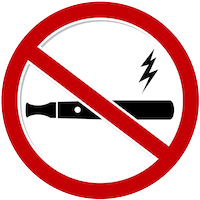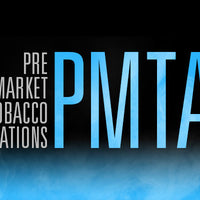In the salad days of the e-cig boom, nearly every vaper and vaping company boasted about our rights to “smoke wherever you want, whenever you want.” Thanks to some notable bans and regulations, we all know this is no longer the case. But perhaps one place that has benefited from e-cig use during the workday is the standard office environment, even if they aren’t yet embracing e-cigs en masse.
Should Vaping be Banned in the Workplace?

As of this writing, 28 states have banned smoking in workplaces, but only three have gone on to officially include e-cigarettes in those bans. For the rest, it’s up to individual employers to determine how to handle this situation. As an employee who vapes, I know that I am considerably more productive having the ability to vape in the office, and not spending 10 minutes of every hour outside, exposed to whatever weather comes around.
The counterpoint is the presence of vapor in enclosed spaces. While we know it’s harmless, dissipating vapor, others might be put off by wafts of what they consider to be “smoke.” It’s an ongoing debate, and one that isn’t likely to be settled until the public receives proper education on what e-cigs are, and more importantly, what goes into the e-liquids that go along with them.
Large Corporations and the Stance on Vaping
Many large corporations tend to take a staunch anti-e-cigarette stance. Walmart includes e-cigarettes in their tobacco bans and does not allow vaping anywhere in their stores or offices. The same is true for similarly sized corporations like Starbucks.
Walmart’s policy is to treat e-cigarettes just like tobacco cigarettes, despite the fact that e-cigs are not tobacco products only sharing nicotine in common. (It should be noted, Walmart provides employees with free nicotine patches and gums when they want to stop smoking. But those aren’t always a good option for people with sensitivities.)
In more extreme cases, companies are imposing penalties on employees who use cigarettes, adding an additional surcharge on their monthly insurance premiums. However, switching to vaping doesn’t help. These companies still issue penalties to employees who use tobacco-free e-cigs. It begs the question:
Why should a nonsmoker pay a smoker’s fee?
Despite companies like this, there are a few other corporations that are vaper-friendly. As of January 2014, McDonald’s was permitting employees and customers to vape, both in restaurant break rooms and in corporate offices. In fact, many companies are encouraging smokers to switch to e-cigs, and are even incentivizing them with free e-cigarettes to use in the workplace.
So which is the right approach? Should e-cigs be treated as tobacco products? Or should companies encourage vaping so employees will spend more time at work, and less time taking breaks? Share your thoughts in the comments below.






